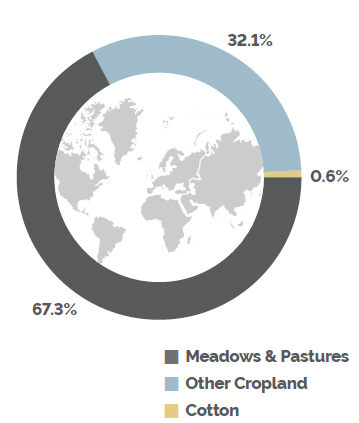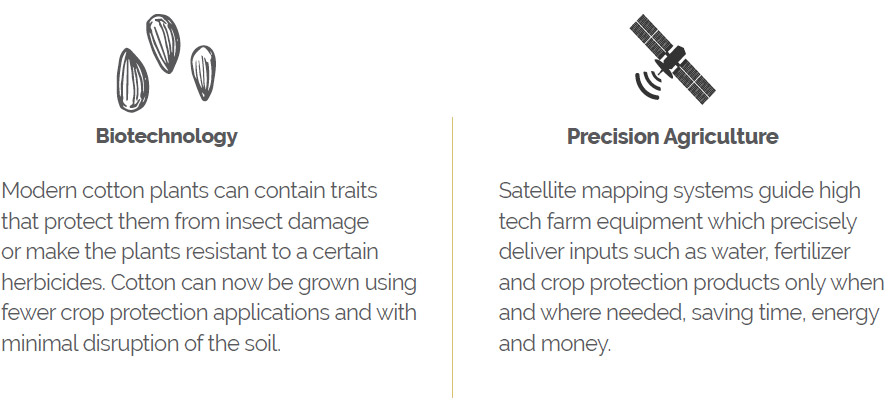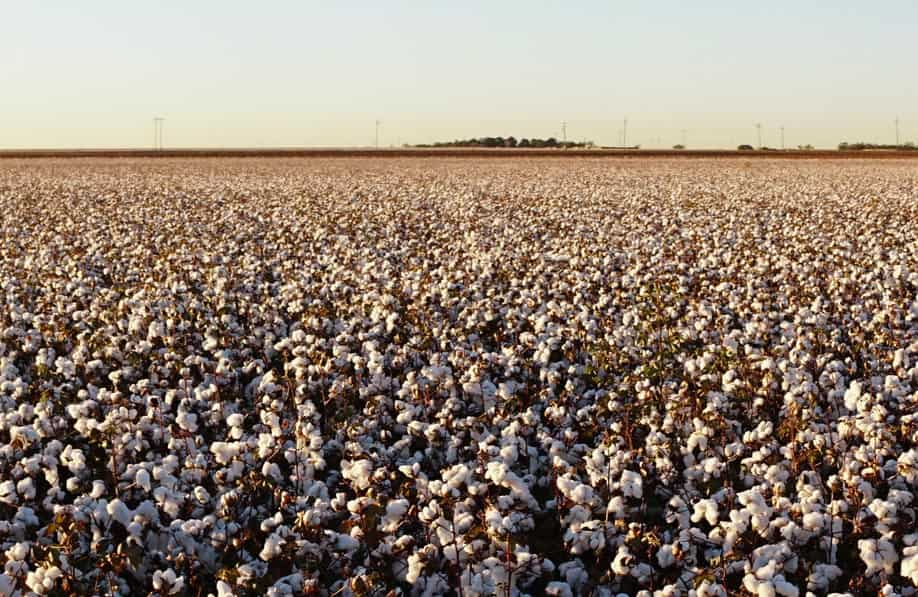Land Use and Cotton Production
There is not enough arable land on earth to grow the amount of food and fiber that will be needed by our surging population. By 2050, the global population is expected to reach 9.5 billion. So, if we can’t produce more land, how can the world double and then triple its output of foods and fibers over the next 25 years?
How much land does it take to grow cotton?
Not a lot when considering all agriculture. Cotton is grown in more than 80 countries but uses only 0.6% of the world’s agricultural lands, which include meadows and pastures commonly used for livestock grazing, and cropland.1 It is also important to remember that cotton produces both food and fiber to help meet these growing demands.
Not only does cotton use less land than many crops, it’s also very valuable. In 2016, cotton fiber and cottonseed represented 1.9% of global cropland, meanwhile the crop provides good economic return for growers producing 2.3% of global farm-gate value for crops1.


Does it take less land to grow cotton today than in the past?
Yes, and significantly less in countries where scientific advancements have been adopted. For example, in 1976 it took more than 1.9 hectares (4.7 acres) to grow one metric ton of cotton fiber in the U.S. In 2017 it took less than 1.07 hectares (2.64 acres) to grow the same amount3. A lot of this improvement can be attributed to the adoption of modern agricultural practices such as the use of biotechnology and precision agriculture.
How can agriculture increase the amount of production per acre, per plant?
The short answer, science. Thanks to continued improvements in seed varieties, irrigation technologies, crop protection products and fertilizers, plants are healthier, use fewer inputs, and have a lower impact on the environment.
Two key areas are making huge strides for cotton:

Are cotton farms a monoculture or is cotton grown in a rotation with other crops?
Cotton is commonly rotated with many other crops such as peanuts and soybeans, which fixates nitrogen in the ground, reducing fertilizer needs. In addition to rotational crops, many producers plant a cover crop (such as wheat or cereal rye) in the winter which protects the soil from erosion, increases soil moisture retention and increase organic content, that in turn can reduce the need for tillage. Beyond that, cover crops can also control weeds and reduce insect pressure.
For more information on cotton and land use, visit cottontoday.cottoninc.com
1: United Nations Food and Agriculture Organization Statistics. (2016). http://www.fao.org/faostat/en/#data/QC
2: Food and Agriculture Organization of the United Nations & International Cotton Advisory Committee. (2015.). Measuring Sustainability in Cotton Farming Systems Towards a Guidance Framework. http://www.fao.org/3/a-i4170e.pdf
3: Meyer, L. (2017). Cotton and Wool Outlook. https://www.ers.usda.gov/webdocs/publications/89224/cws-18f.pdf?v=0. Calculated as a 5 year running average.
